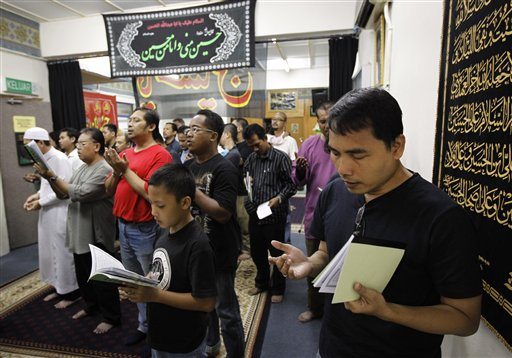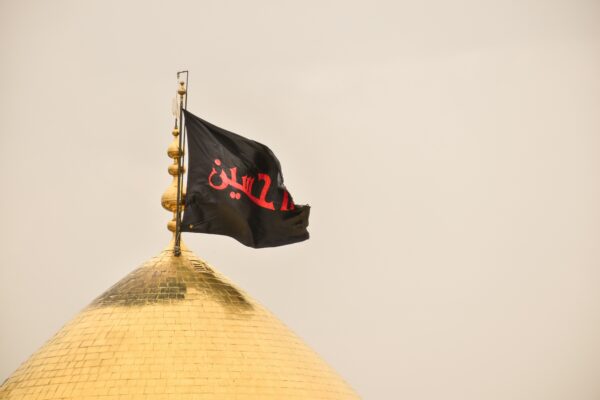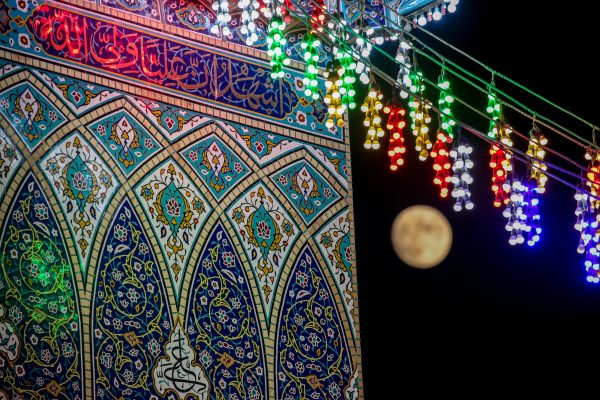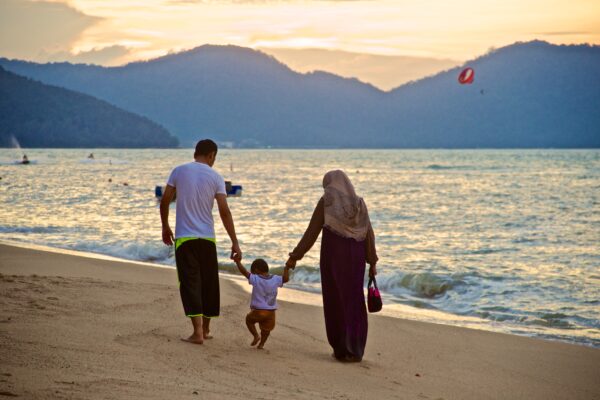While I was not anti-Shi’a, I had apprehensions about this branch within Islam: it is alien and even weird according to “mainstream” Islam.
While I was not anti-Shi’a, I had apprehensions about this branch within Islam: it is alien and even weird according to “mainstream” Islam.
As one born in the Sunni tradition, I regretted not knowing much about Shi’ism. Not much, if not at all, was taught about the Shi’a tradition in my early religious instruction. This blind spot – of assuming that there is only one Islam: the Sunni version – has a consequence later on. I grew up in a period of rampant “Salafization” of Islamic discourse. Much was happening in the 1980s, brought about by the changing geopolitical landscape particularly after the Iranian Revolution and the counter-ideology led by Saudi Arabia. Given the absence of any religious instruction on Shi’ism within the Muslim tradition, it was easy for anti-Shi’a ideas to be sowed. While I was not anti-Shi’a, I had apprehensions about this branch within Islam: it can appear to be alien and even weird when compared to “mainstream” Islam.
It was not until my exposure to Islamic history and philosophy that led me to a new perspective on the evolving aspects of Islam, its deeply diverse nature, and the competing ideas of what we often essentialized as “tradition”. Shi’ism, like the emergence of other early theological movements (e.g. the Jabariyah, Qadariyah, Mu’tazila, etc) was born out of the sociopolitical context of a leadership crisis after the death of Prophet Muhammad. Knowing this aspect of history would banish any notion of “the perfect past”.
Demythologising history
It was my first lesson in the demythologising aspect of history. Two works had been deeply influential for me: Fazlur Rahman’s Methodology in Islamic History, and Majid Fakhry’s A History of Islamic Philosophy. Prior to this, and from my religious instruction, I had been taught Muslim history through an ideological and partisan lens of Sunni triumphalism that was firmed up and consolidated some three centuries after Islam’s emergence in Arabia. It was a time, as Fazlur Rahman contended when the term “Ahlus Sunnah wal Jama’ah” (People of the Prophetic Practices and of the Majority, or “Sunni” in short) became current. It was the orthodoxy that I learnt, not the formation of orthodoxy. This distinction is critical.
In much of my early religious instruction, the history of Islam was presented as a “glorious period”. The period of the Khulafa’ ar-Rasyidun (the Four Rightly Guided Caliphs – comprising, of Abu Bakr, Umar, Uthman and ‘Ali – was idealised as the “Golden Period”, otherwise known in Sunni version of history as the period of the “Salafussoleh” or the pious first three generation of the Prophet, his Companions and the companions of the Companions. Perhaps, it was the influence of Islamic modernism that emerged in the late 19th century that led to this particular worldview. There was a need then to make sense of the sorry state of the Muslim world under colonisation, hence, what the Muslims were experiencing was a degeneration of history. History was, according to this view, perfected during the time of the Prophet, and then it deteriorates. Modernists want to restore this glory.
Therefore, returning to the “Golden Period” is necessary. All solutions to the present problems lie in the past. And with the emergence of Islamism (a politicised form of Islam), the past was not just perfect; it was fossilised into forms that must be implemented in the present. The idea of “Syariah Law” (as understood by Islamists) is one example. I grew up into this worldview with the expansion of Islamism within the Malay world. It was known as the “dakwah movement”. In short, Islam became a political ideology.
As an ideology, complexities, contradictions and ambiguities were often shunned. The very idea of “Islam” must be made as a rallying call to mobilise Muslims. It also became a political identity. As an identity, there was a need to define Islam against what it is not. Just like politics, there were allies and enemies. The latter can be external or internal. While the external threat to Islam was made obvious (secularism, the Jews and Christians, and the all-encompassing “West”), the internal was amorphous, and hence, more dangerous. They were, I often heard, “bagai gunting di balik lipatan” (like scissors in the cloth’s folding), a Malay idiom to signify an unseen and dangerous threat that can stab you unknowingly – and Shi’as happened to be one of them!
Understanding divisions within Islam
Moving back to the idea of the Khulafa’ ar-Rasyidun, I came to realise later, that out of these four caliphs, three were murdered. In addition, the first major split in the early Muslim period occurred during this period when the Battle of Siffin that took place in 657 CE during the rule of Caliph ‘Ali. It gave rise to the proto-Shi’as (known as the Party of ‘Ali), as well as the first major extremist theological school within Islam known as the Khawarij or ‘those who left’. The seeds of the division had, however, occurred much earlier during the controversial rule of the third caliph, Uthman. So much for the “Golden Age”! One key text that was introduced to me, via the late Professor Syed Hussein Alatas, was Fitna al-Kubra (The Great Dissension) by the 19th-century Egyptian thinker, Taha Husayn. My overtures into early Islamic history would never be the same again.
It was my study into the divisions within early Islam that sets my appreciation for the diversity within Islam. My training in philosophy and my exposure to sociological thinking led me to identify the emergence of sects and schools of thought within Islam as located primarily in the social, economic and political context of the historical period in question. In short, I became less dogmatic about my own understanding of Islam. My own adherence to a particular form of Islam – the Sunni and Shafi’i form, as prevalent in the Malay world – was historically and sociologically conditioned, so had I been born elsewhere and in a different period of history, I might be a Muslim in a totally different way. More importantly, I do not get to choose where I would be born.
It is not unthinkable that I might be a Shi’a should I be born in Iran today, or probably a Mu’tazilite had I been born in the 9th century Baghdad at the height of the Abbasid rule. So, I questioned myself: why should I be insistent on a sectarian approach to Islam by upholding that only my Islam is correct while all other ways of knowing and relating to Islam is wrong? Am I – I asked myself one day – worshipping God or worshipping my own interpretation of God’s religion?
Slowly, I began to see Islam more as a manifestation of the divine mercy in the ebbs and flow of history, through different forms and expressions – all pointing to the One. My responsibility is to understand and make sense, to the best of my ability, of this deep diversity within Islam, and if it is a manifestation of divine mercy and wisdom, I must embrace and be at ease with it. After all, as the adage goes, differences of opinion within the community is a blessing (ikhtilaf ummati rahmah).
Shi’ism and the Malays
 Apart from historical and philosophical studies, I was also a student of Malay literature. This was another window into which I began to discover Shi’i thought. In fact, I found it to be a historical betrayal to deny the role that Shi’as had played in the Southeast Asian region. One of the earliest surviving classical Malay texts was the 16th-century Hikayat Muhammad Hanafiyyah, a tale that described the murder of ‘Ali and the subsequent martyrdom of Husayn by the forces of Yazid in Karbala. Early Shi’a presence in the Malay world could also be seen through archaeological and linguistic records, some of which were discussed in two recent edited works: Chiara Formichi and Michael Feener’s Shi’ism in South East Asia, and Dicky Sofyan’s Sejarah dan Budaya Syiah di Asia Tenggara. [History and Culture of the Shi’as in Southeast Asia]
Apart from historical and philosophical studies, I was also a student of Malay literature. This was another window into which I began to discover Shi’i thought. In fact, I found it to be a historical betrayal to deny the role that Shi’as had played in the Southeast Asian region. One of the earliest surviving classical Malay texts was the 16th-century Hikayat Muhammad Hanafiyyah, a tale that described the murder of ‘Ali and the subsequent martyrdom of Husayn by the forces of Yazid in Karbala. Early Shi’a presence in the Malay world could also be seen through archaeological and linguistic records, some of which were discussed in two recent edited works: Chiara Formichi and Michael Feener’s Shi’ism in South East Asia, and Dicky Sofyan’s Sejarah dan Budaya Syiah di Asia Tenggara. [History and Culture of the Shi’as in Southeast Asia]
But while Shi’a presence was established in early Malay records, I had not been introduced properly to Malay Shi’as until 2009. I had, of course, interacted with scholars from Shi’a background, including the likes of Dr. Asghar Ali Engineer and Professor Abdulaziz Sachedina. I had also enjoyed readings works by Shi’a scholars and thinkers, such as Ali Shariati, Abdolkarim Soroush and Muhammad Husayn Tabataba’i. I was also exposed to the works of a progressive Indonesian Shi’a thinker, Jalaluddin Rakhmat.
In 2009, I had the opportunity to accompany Professor Sachedina (who was a guest of the Islamic Religious Council of Singapore) to the Jaafri Muslim Association (JMA), a local Shi’a organisation. While my contact then was primarily Shi’as of South Asian origin (they came to Singapore as merchants during the colonial period), it was in JMA that I encountered Malay Shi’as. These were Malays who became Shi’as after the Iranian Revolution. I had heard about their existence, but it was the first time that I met and even talked to one. Nothing extraordinary happened, of course, but my fear towards the Shi’as was reduced, and it was my first step towards encountering the Other – a Malay Shi’a. Essentially, it was a huge moment for me.
Two years later, I accepted a friend’s invitation to an Asyura (10th of Muharram) commemoration that was organised by a Malay Shi’ia organisation, Himpunan Belia Islam (Muslim Youth Assembly/HBI), which was held at the annexe building of the Sultan Mosque. The event was attended, mostly by Shi’a youths, but featured a dialogue segment between Ustaz Rosli from the Shi’a community and Professor Syed Farid Alatas from the Sunni. It was my first Sunni-Shi’a dialogue in Singapore, and I found the atmosphere respectful and the session informative.
To me, Asyura has always been about the religious ritual of fasting and partaking in a special Malay porridge known as bubur Asyura – but it dawned on me for the first time that something violent and tragic had occurred on this day of Asyura: an event that was never spoken of nor discussed by Muslims in general. It was as if the incident was too painful to be remembered; or willfully neglected to deny any form of responsibility on the part of the triumphant Umayyads (accepted as a legitimate caliphate by the Sunnis) for the killing of the Prophet’s grandson and a massacre of some 70 of his followers, including women and young children, in Karbala. My interest in this incident grew, and I would never again view Asyura in the same light. It was a period of mourning, not celebration.
Friendship with Shi’as
Ever since then, I began to meet more local Shi’as and developed friendship ties amongst a few. To me, Shi’as are no longer ‘the Other’ – objects of distant gazing and suspicion. Knowing a Shi’a at a personal level dispelled any misconception I once had. I was able to learn about Shi’ism from a first-hand source, and this is what we need in order to overcome the prejudice and misinformation that circulates among many Sunni Muslims in Singapore. Sadly, the local religious fraternity had a lot to do with this prejudice and misinformation.
It was just early this year that I overheard two members of a local Islamic institution discussing Shi’ism in a typically misinformed manner. One was making a remark about how Shi’as include the mention of ‘Ali’s name in the syahadah or declaration of faith, and another was making a statement about how the Shi’as have a different Qur’an. The latter was definitely untrue: Shi’as hold on to the same Qur’an as other Muslims. Regarding the syahadah, while it is true, the additional line is “Aliyun Waliyullah wasiyur Rasulullah” (‘Ali is the Wali/Friend of Allah and Successor to the Prophet) and reflect the oath of allegiance to ‘Ali and the Ahlul Bayt (Family of the Prophet); nothing more. Most Shi’a clerics would say that this additional line is not mandatory. If we were to understand the historical context of Shi’ism, we will understand why this additional line exists. There is nothing heretical about this.
Normalising difference
It is important to note that a meaningful encounter with a difference is, in itself, an important element in the development of an open and charitable embrace of the Other. My own experience had taught me to engage with difference, not to push it into hiding. The normalising difference is the only way that we can cultivate an embrace of diversity. Suppressing expressions of difference will only create an illusion of harmony where, in fact, we are merely imposing the dominant and majoritarian privilege while implicitly forcing the minority to conform to the dominant and the majority. This is where any expression of difference in public will be seen as destabilising.
I soon developed a realisation that it is the majority Sunnis who must extend the charitable hand to embrace the minority Shi’as amongst us. As the majority, we must ensure that the rights of our minority Shi’a brothers and sisters be protected; that they feel safe and not discriminated; and that they can be who they are without fear nor reprisals as equal citizens, and as fellow Muslims like us. But first, we must work towards building a bridge for Sunnis and Shi’as to interact within safe spaces. On this aspect, the formation of the MCollective in 2016 – a network of Singapore Muslim youths interested in bridging intra-faith relations – is a promising start. The network began by organising intrafaith iftar (breaking of fast meal) during Ramadan. It also organised forums where Muslim youths from different Muslim traditions gathered to deepen their understanding of each other’s perspectives and practices. I had my first experience of praying side-by-side a Shi’a brother, during one of the sessions. I felt at ease. We were facing the same qiblah.
Removing fear
One additional aspect is worth pointing out: the tendency to exoticise and peddle fear on what we are ignorant about. A year ago, a video was circulating, showing an Asyura commemoration in Singapore with local Shi’a youths reciting praises for ‘Ali while slapping their chest. It was deemed controversial and became an online viral, purportedly as “proof” of the Shi’as’ “deviant” practice. The reactions of the Sunnis were telling of their ignorance of why the Shi’as do this ritual and the historical amnesia of what actually happened in Karbala. It is like how some non-Muslims had developed an irrational fear of the wearing of the headscarf or the use of certain Arabic expressions in daily interactions. Such fear can be overcome if more informed voices can come out publicly to educate and counter the fearmongering by anti-Shi’a voices. But where should these informed voices come from? Why are they not forthcoming? And what can be done to cultivate and empower such voices?
I believe that there are reasonable people in the local Muslim community who need the right signals from people of authority. A few months ago, reports emerged about a Singaporean who wanted to travel to Syria to kill Shi’as who were considered as “deviants”. This is a worrying sign that anti-Shi’a rhetoric has reached a critical stage where some are driven to engage in violence. It is time that we acknowledge how dangerous sectarianism can be in the context of a deeply diverse society like Singapore. More importantly, we must recognise this diversity within the Muslim community itself and stop pretending that we are all identical, a monolithic Muslim community. If diversity is natural, we should educate people to be at ease with it; not to force everyone into a single mold and generate fear and prejudices towards those who belong to a different tradition or who subscribed to different ways of being a Muslim in today’s world.
Normalising this diversity is, therefore, crucial – along with the removal of fear and the building of bridges for deeper understanding. The more we suppress expressions of this diversity, the more we perpetuate prejudices and ignorance. We have learnt this lesson in inter-religious relations. Today, we are actively promoting interfaith work as a way to normalise differences in faith and to promote meaningful interactions and deeper understanding across the various religions. It is time we do the same for intrafaith relations, particularly within Islam.
Taking a stand for diversity
I am fortunate that I found a new way of relating to the diversity within Islam. It began with a historical consciousness that led to a shift in perspective. Through further active interactions with the Shi’as themselves and friendship ties that developed thereon, misconceptions were dispelled and my prejudices disappeared. For me, it boils down to one important lesson: we need to actively confront the problem of dehumanisation of those who are different from us. In this process, we will learn a little bit more about our own blind spots while we search for our common humanity in and through others.
Today, I will not stay silent when an untruth is spoken against Shi’ism in general. That is the very least that I can do as a fellow Muslim who acknowledges his Shi’a brothers and sisters as belonging to the same ummah. Sectarianism has no place in Singapore, nor anywhere in the world, and I hope more voices will emerge to provide guidance for a new generation of Muslim youths who are trying to make sense of diversity, while remaining vigilant of the rise of extremist discourses that are divisive and promoting a supremacist, exclusivist and monolithic version of Islam.
by Mohamed Imran Mohamed Taib





